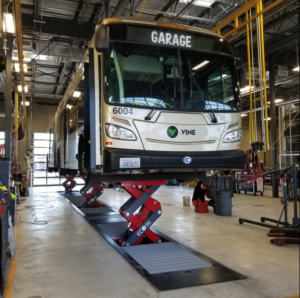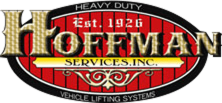Combating Supply Chain Disruptions with Heavy Duty Lifts

As a heavy duty lift provider, Hoffman Services has seen first hand the impact of having equipment issues due to poor maintenance scheduling as well as staffing problems as a result of poor safety checks so ensuring staff are certified and promoting a culture of safety is critical.
Stertil-Koni promotes a 6-step approach to technician safety combines with top vehicle performance.
1. Certification is Key: Consider purchasing lifts certified by the industry’s independent, third-party watchdog— the Automotive Lift Institute (ALI). The ALI Lift Certification Program is the only accredited program in North America to independently test and validate that a vehicle meets all ANSI/ALI ALCTV (current edition) safety and performance requirements.
2. Lift Selection: Vehicle weight and height matter. That is why facility maintenance workers should know in advance the weight of the heaviest vehicle they intend to lift and make certain that the lift selected is certified to meet or exceed that capacity. As for height, always measure the height clearance of the facility – prior to selecting a lifting system – to ensure ample room to raise a vehicle for servicing. Further, note the height of the tallest vehicle you intend to lift and make certain there is sufficient room to raise the vehicle to a height that permits a technician to work comfortably underneath the vehicle.
3. Safety First: During lift setup, check the perimeter of the lift to confirm that nothing obstructs its path and there are no hazards in the lifting area. Lift the vehicle no more than 12 inches off the ground, pause, and do another sweep of the area to check that there are no impediments. Then, lift the vehicle to a proper height that allows the technician to work comfortably underneath the vehicle. Also, it is advisable to select lifts, such as those from Stertil-Koni, that include an independent mechanical locking system as standard. This feature allows the lift to be lowered into its locks — at a convenient height– as technicians performs their work.
4. Maintain a Strict Maintenance Schedule: Make certain that all lifts are subject to a regular program of scheduled maintenance – in accordance with the manufacturer’s recommended schedule – and receive an annual lift inspection by an ALI Certified Lift Inspector.
5. Technology Matters: Look for vehicle lifts that offer new technologies to enhance operator safety and lift performance. For example, Stertil-Koni lifts feature a full-color touch-screen control console, putting all lifting information directly at the fingertips of the busy tech on the shop floor. Stertil-Koni has also introduced a Continuous Recess system for its inground scissor-style ECOLIFT and telescopic piston DIAMONDLIFT. This technology allows the lifting bolster to recess flush to the floor while moving horizontally under even the most low profile buses and trucks. It also facilitates lift set up, minimizes the possibility of vehicles hitting the lift upon approach, and reduces tripping hazards.
6. Create a Culture of Safety: Promoting a positive culture of safety at the shop is essential. Service bulletins, safety messages, and continuously updating technicians’ skills are vital to a smooth-running maintenance facility. Stertil-Koni also suggests using Wireless Mobile Column Lifts and selecting shop equipment specifically designed to ensure operator safety and proper ergonomics, such as the high lift wheel dolly.
